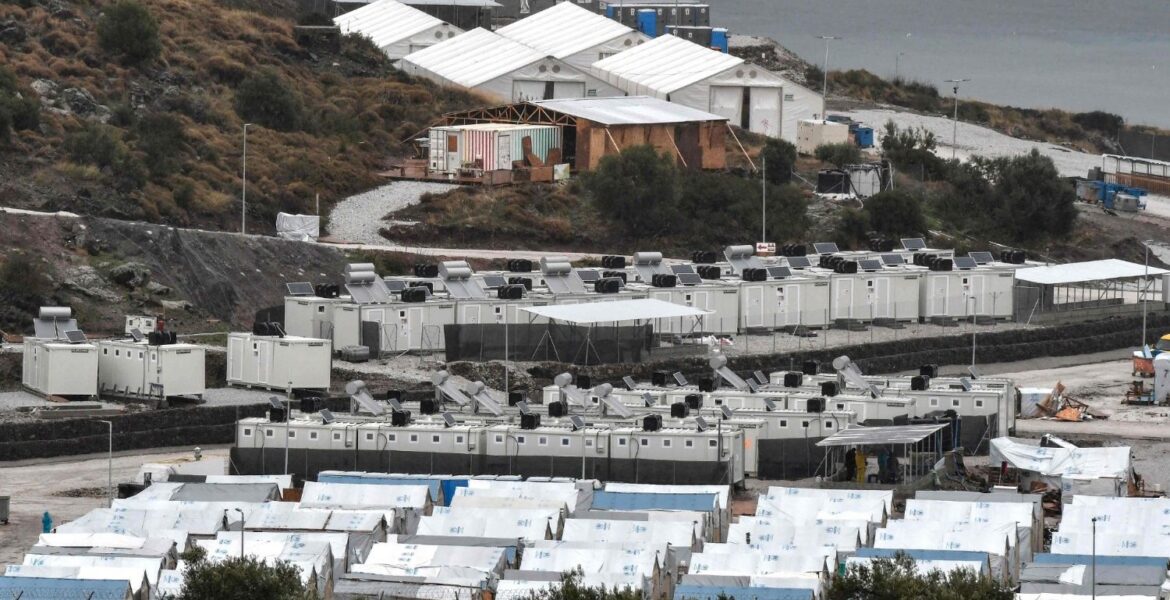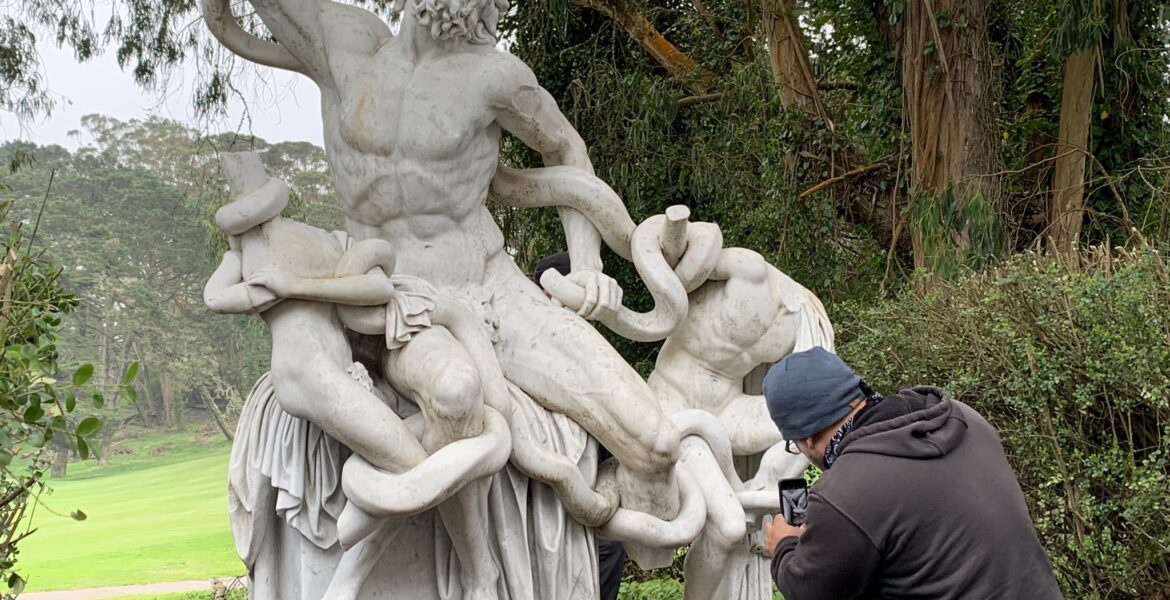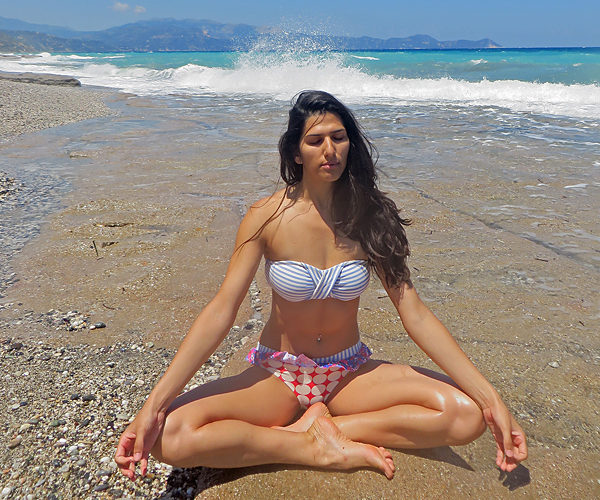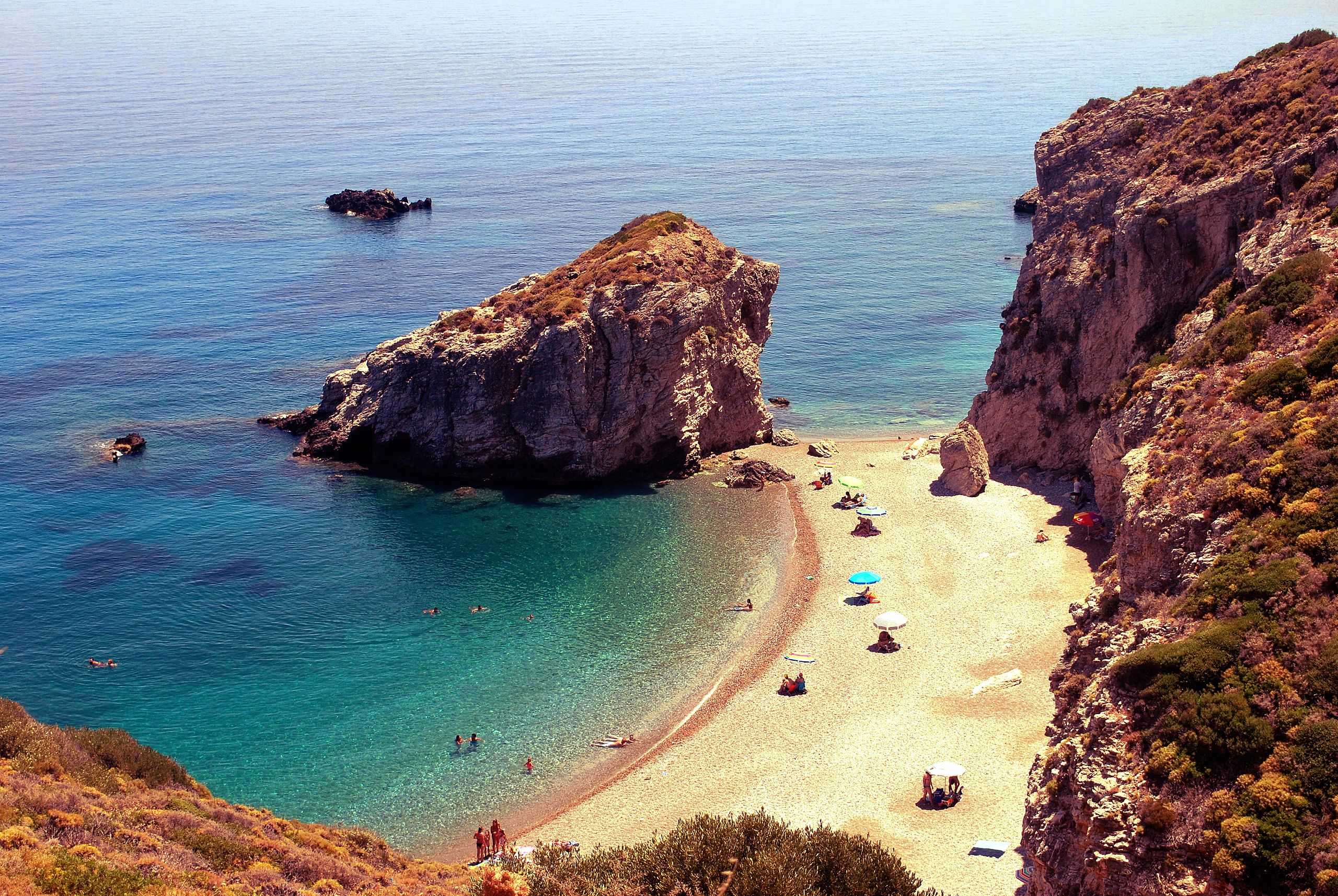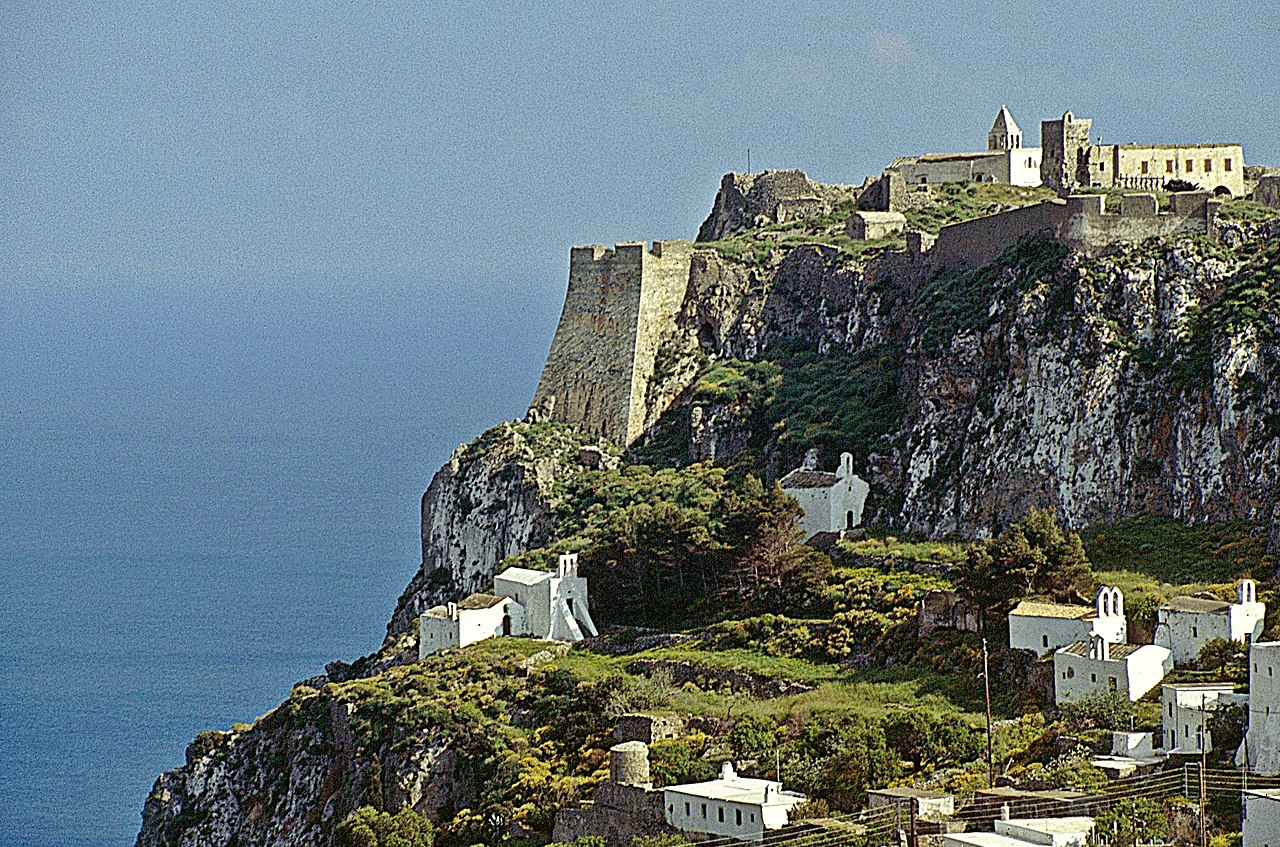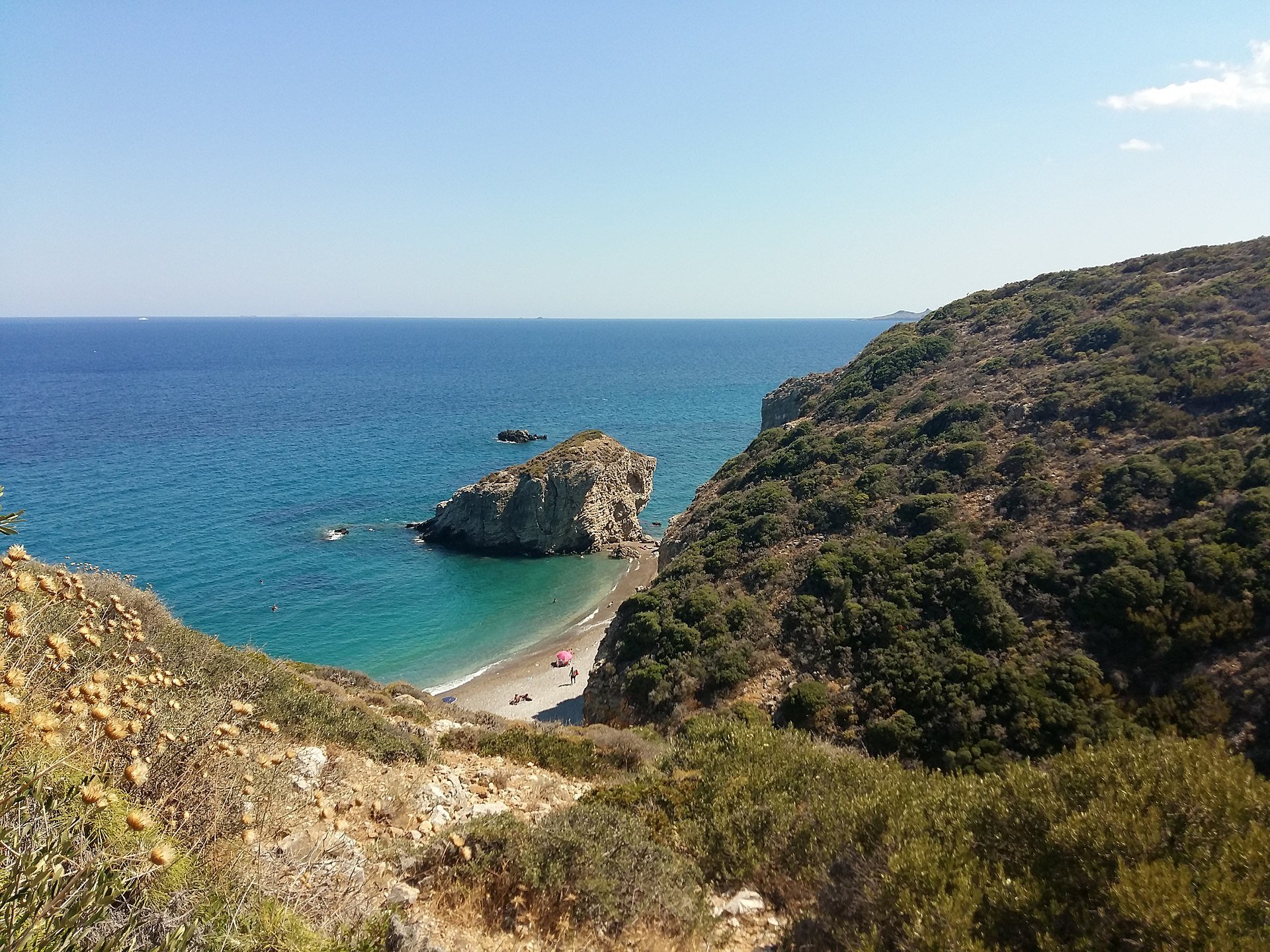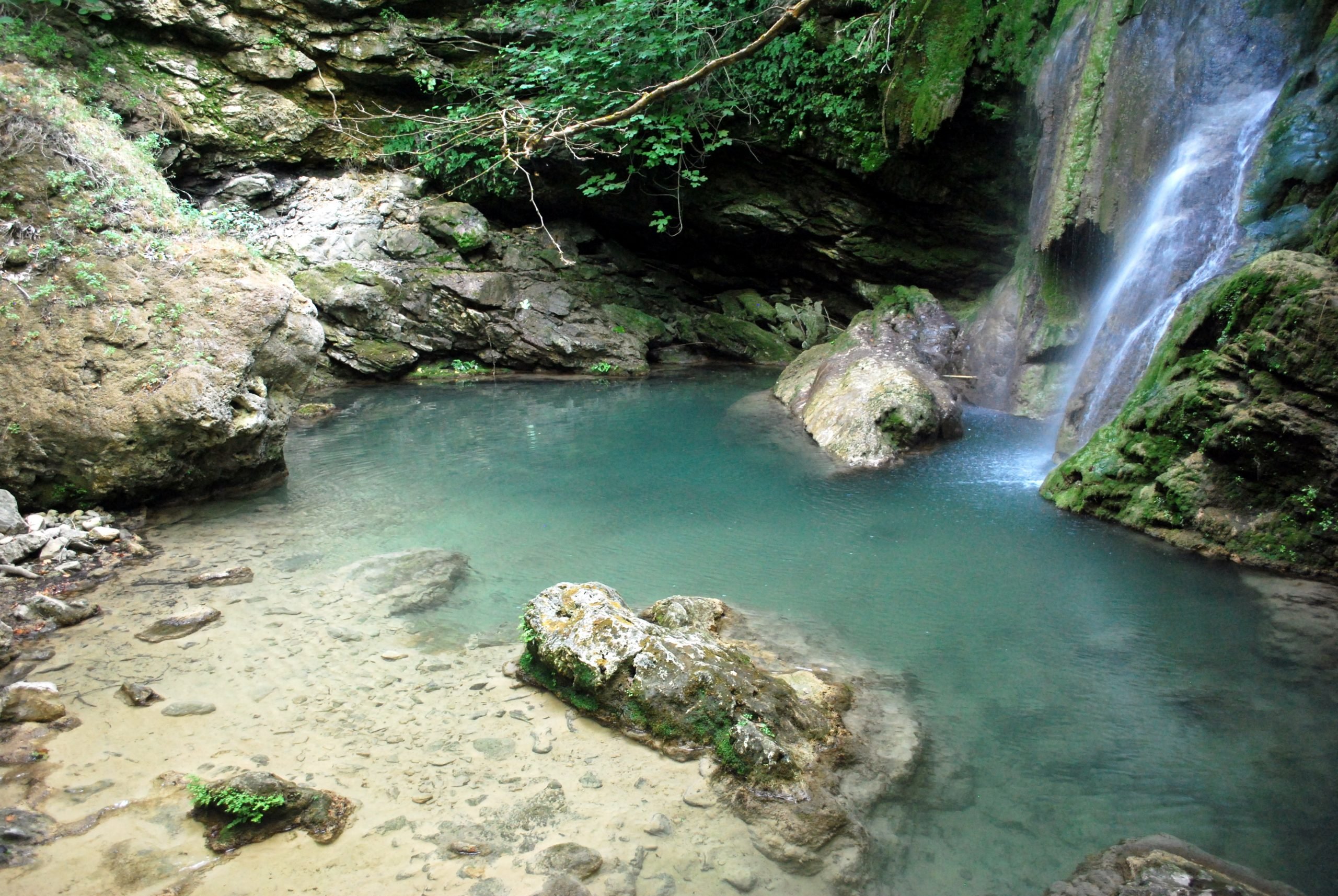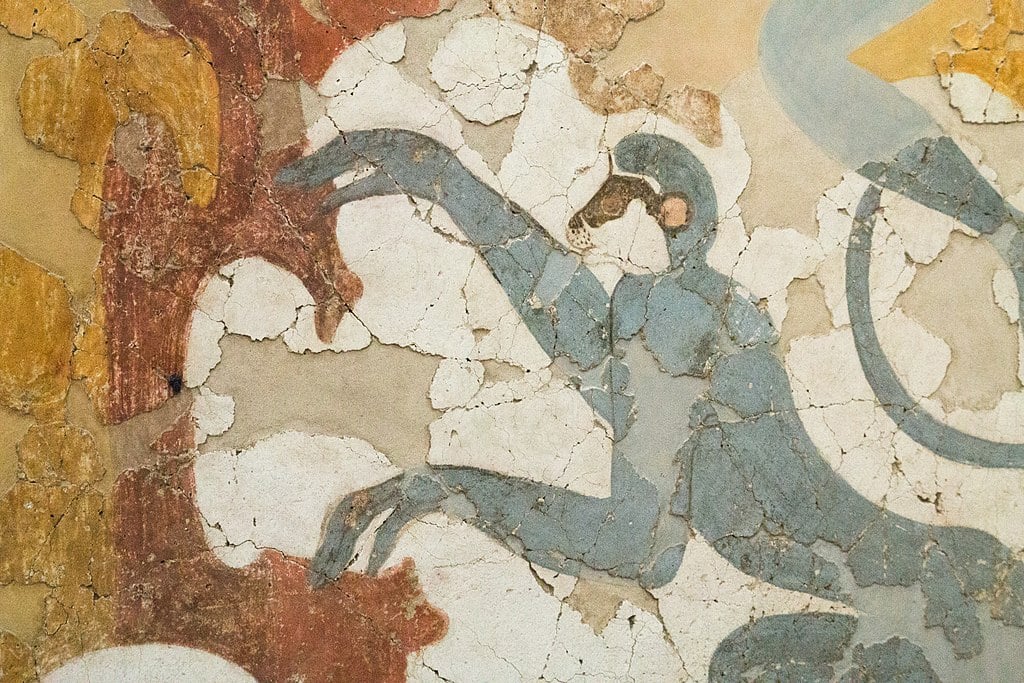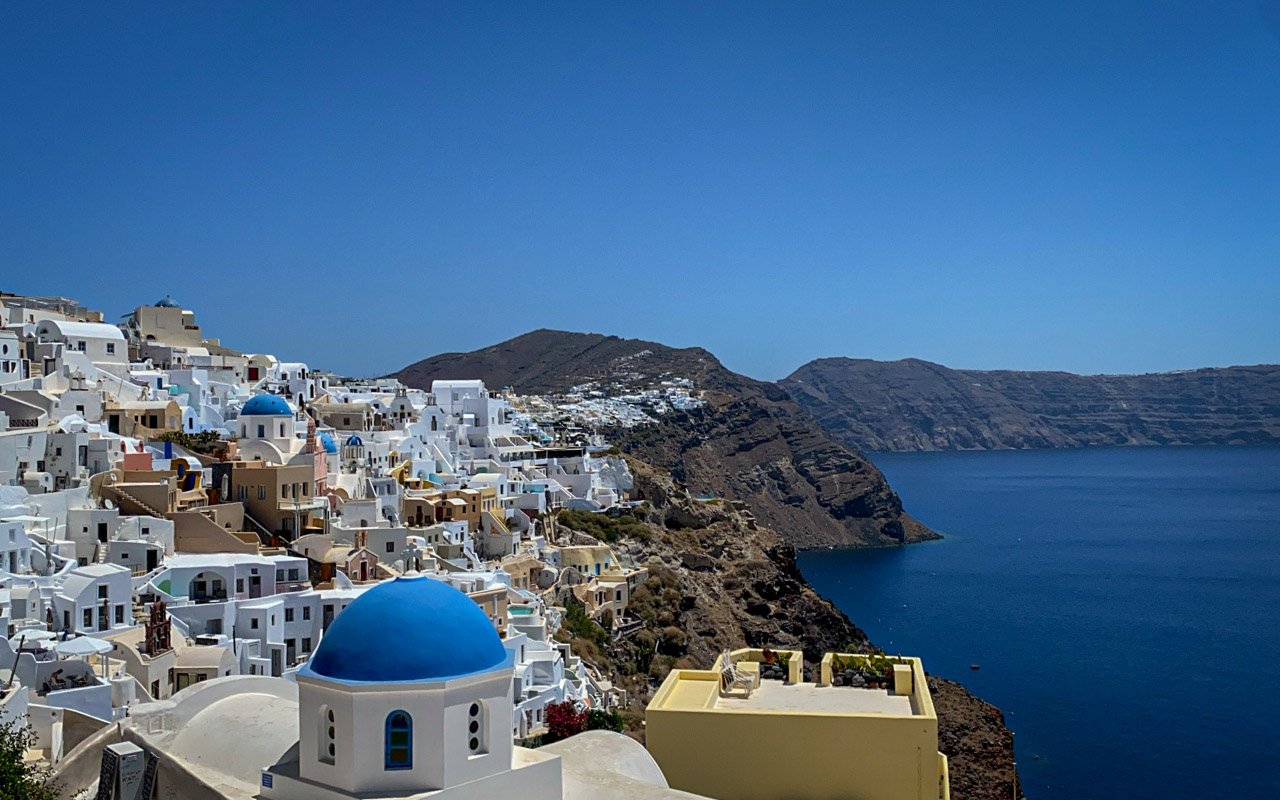Located in the heart of Athens, Monastiraki Square is a unique blend of styles, cultures and eras, ever-changing and vibrant. It is without question one of the most charming and lively areas in the Greek capital.
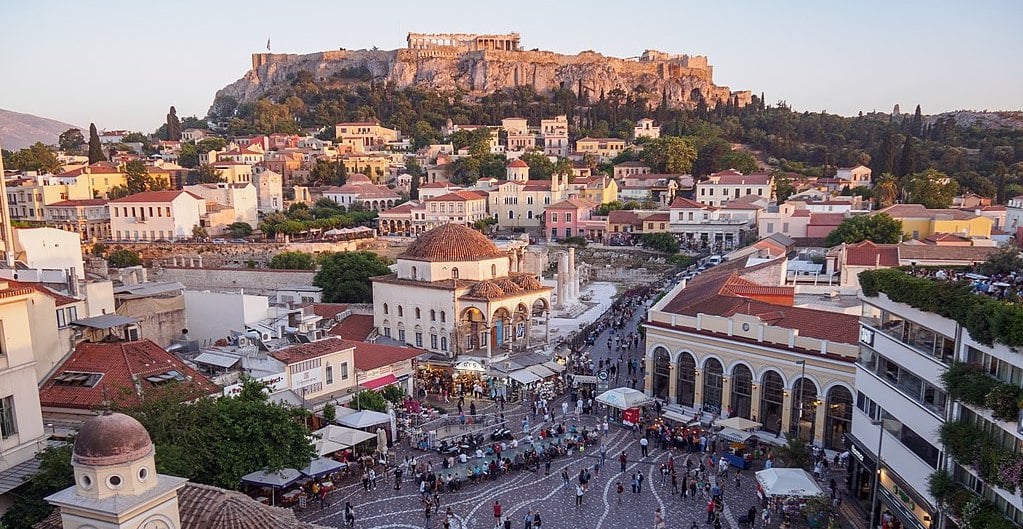
If you just stand at the center of Monastiraki Square and take a good look around you, you can form a more or less complete picture of Athens’ past and present, all within just a few square meters.
The stunning diversity of the architecture of its buildings alone epitomizes the turbulent history of Greece.
Layout of Monastiraki Square reflects the history of Athens
On one side of the square is the Orthodox Church of the Virgin Mary Pantanassa, and on the other is the Ottoman-era Mosque of Tzistarakis.
Built in the second century AD, the pillars of Hadrian’s Library can still be seen through the arches of the mosque, while – directly above them – the Acropolis dominates your view, forming a stunning backdrop for the scene.
A number of neoclassical buildings which surround the square, including the Metro Station, add yet another era to the list of those which are already exemplified in this small space.
Recently renovated, the Square itself is now paved with mosaic “flows” of marble, stone and wrought iron, symbolizing the diversity of the Mediterranean.
There is so much more to this charming place than one might think. Let’s take a dive into Monastiraki’s fascinating history, and what makes it so completely unique today.
The history of the iconic square
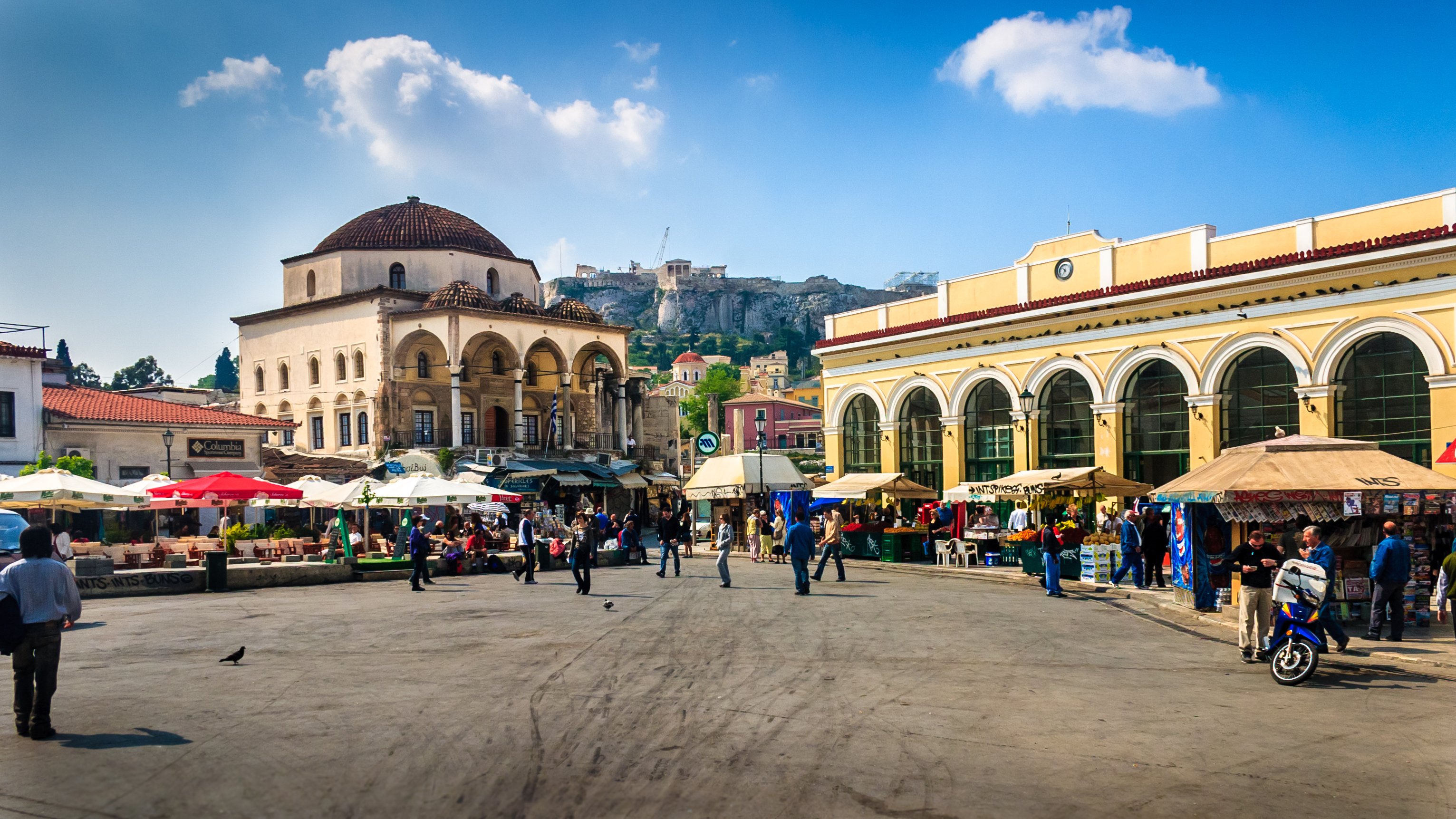
The iconic metro station of Monastiraki was built in 1895 when the above-ground metro was constructed. It was actually a train, not an actual underground subway, which is why Athenians still call it the “treno.”
The treno connects the Port of Piraeus to Athens and Kifissias, a neighborhood in the north of Athens.
Presently, the underground metro line which connects the airport to the city passes through Monastiraki as well, making it a major transportation hub today.
Just like everywhere else in Athens, the creation of the metro led to discoveries of ancient ruins and artifacts, some of which are showcased in the station itself.
When the construction work for the new metro station began in 2004, there were many difficulties in this part of the city, since it abuts the riverbed of the Eridanos, which was a sacred river to the ancient Athenians.
The Eridanos River flowed from its source on the slopes of Lykabettos Hill in Athens, which rises 300 meters (908 feet) above sea level. Its waters then flowed through the Agora of ancient Athens to the archaeological site of Kerameikos, an ancient cemetery, where its bed is still visible.
The Ancient Agora of Athens
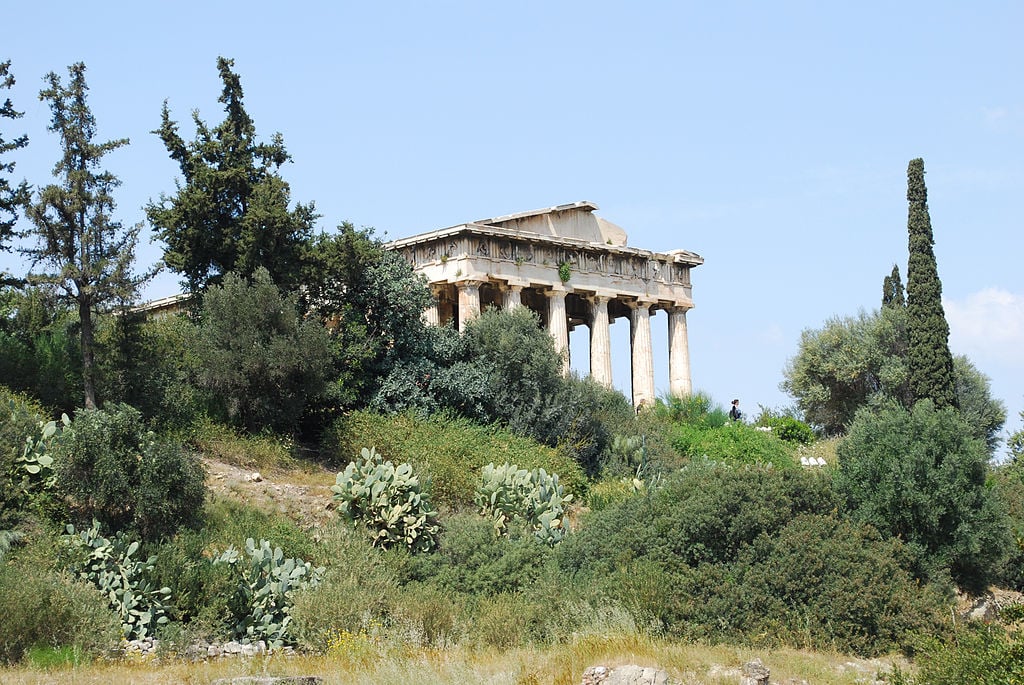
In ancient Greek times, the Agora of Athens served as the commercial, social, and political hub of the entire city, where an open-air market would be also be held at certain intervals.
It was the best place for citizens to meet up and to debate about the future of the city and any of the many other issues of the day.
Various temples built to worship the Greek gods surrounded the Agora, which meant that this space also functioned as a vital religious center.
The Ancient Agora now
Although most of the buildings in the Agora are unfortunately not well preserved, some of the most prominent buildings, including the Stoa of Attalos, an ancient “department store” which currently houses the Ancient Agora Museum, have been beautifully reconstructed.
The Agora is also home to the Temple of Hephaestus, who was the god of craftsmen. This building, one of the best-preserved temples of ancient Greece, was constructed between 449 and 415 BC.
The ancient Agora is without a doubt one of the most important landmarks in the capital. Although most of the buildings in the area have been terribly damaged over the millennia, this site’s historic importance makes it a must-see for all visitors to Greece.
Kerameikos, Athens’ Ancient Cemetery
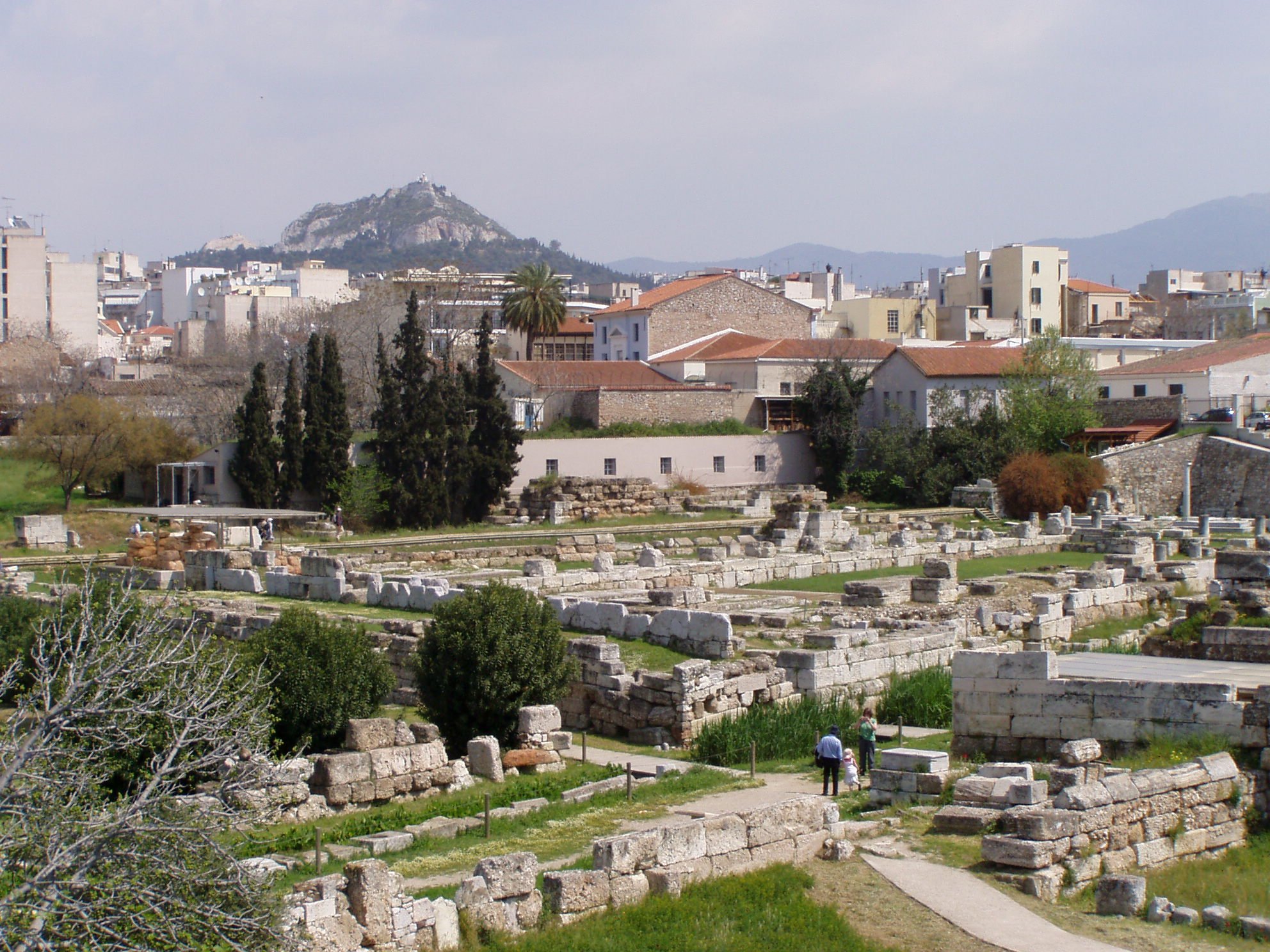
One of the most important — but least visited — archaeological sites in Athens is Kerameikos, the ancient cemetery of Athens, which was in continuous use from the ninth century BC until Roman times.
Before the area was made into a cemetery, a number of pottery workshops existed there, leading the area to be named Kerameikos, from “keramos,” which means “pottery” in Greek.
The neighborhood was split into two parts by the ancient walls of Athens, the so-called Themistoclean Walls.
The outer part, situated outside the city walls, was made into a cemetery, but the inner section continued to be an inhabited area.
Modern archaeological excavations of the area began in 1870; the German Archaeological Institute of Athens has been in charge of the excavations from 1913 until the present day.
Over the decades, archaeologists have unearthed temple columns, marble statues and funeral offerings as well as thousands of tombs and the remains of various public buildings.
One thousand additional tombs, dating from the 4th and 5th century BC, were found during the works for the construction of Kerameikos Metro Station.
Visitors can see all the fascinating archaeological discoveries at a small museum located next to the entrance of the site.
The Tzistarakis Mosque

Located just to the right of Monastiraki station, the Mosque of Tzistarakis Aga stands as a symbol of the days of Ottoman rule over the city of Athens.
Tzistarakis was the one-time Ottoman ruler of Athens who made the fateful decision to build a mosque in 1759 on the square of the Bazaar (market), as this square was previously known.
Legend has it that Tzistarakis ordered that an ancient column from the Temple of Zeus be destroyed and made into plaster to whitewash the walls of his mosque.
However, a terrible plague devastated the city the next year, and the city’s populace accused Tzistarakis of causing the sudden breakout of the disease.
According to ancient Greek folk tradition, all ancient artifacts are imbued with spirits, and they should never be disturbed — for any reason.
As they saw it, Tzistarakis’ decision to destroy the columns angered the spirits, who took revenge by sending a plague upon the city.
In the end, the Ottoman ruler was arrested by an order of the Sultan and he was sentenced to death by decapitation.
After the modern Greek state was established, the Mosque was turned into a storage room and an armory — and it was even used as a prison at one point.
Since its restoration in 1915, it has functioned as a museum for handicrafts, and since 1975 it has exhibited a collection of early 20th century pottery from Greece, Cyprus, and Ottoman and modern Turkey.
Hadrian’s Library
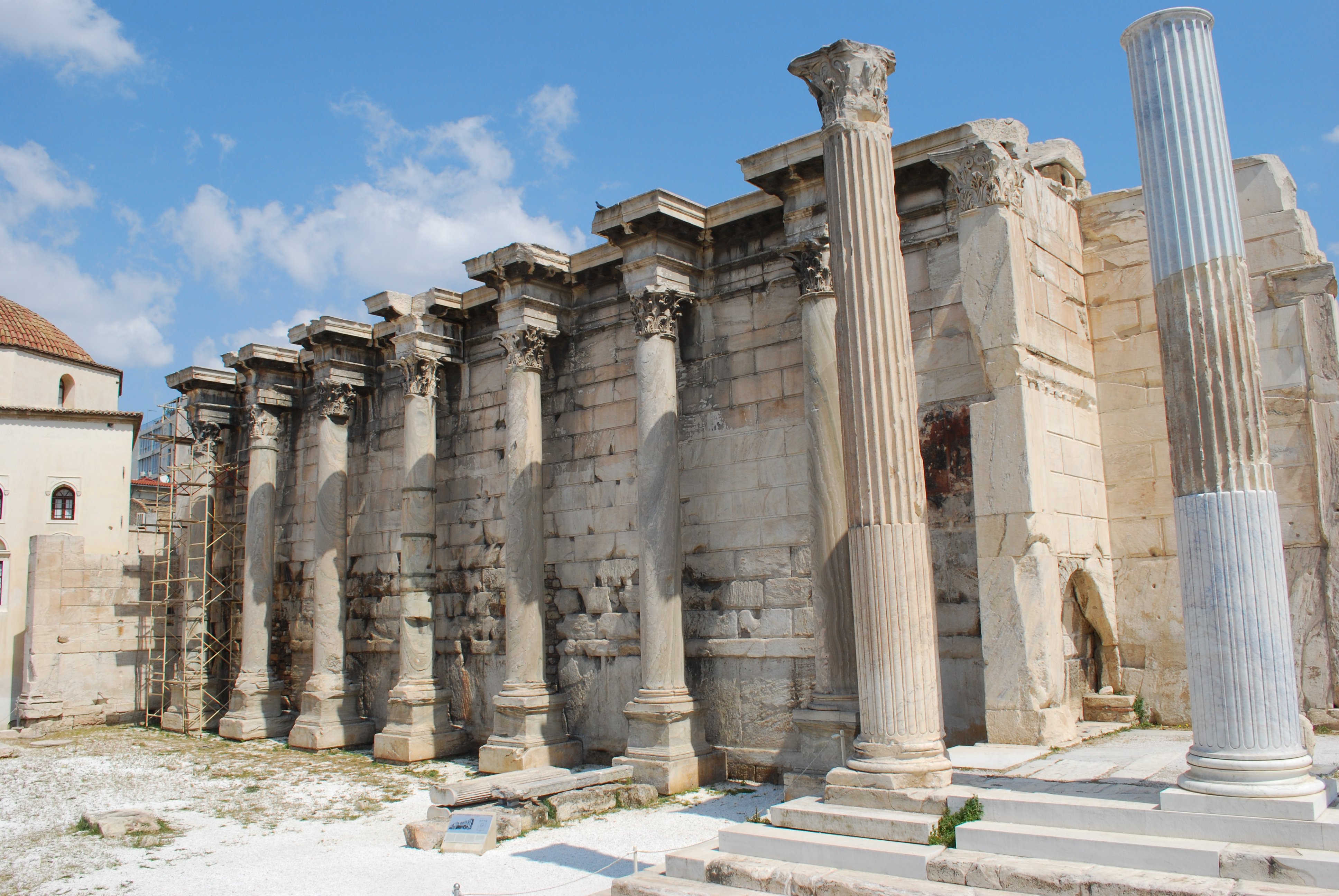

Hadrian’s Library, which is found right next to the Tzistarakis Mosque, is the most impressive ancient building to be found in all of Monastiraki.
Part of the ambitious construction program of the Roman Emperor Hadrian, the library was built in the second century AD.
When finished, it was one of the most lavishly-decorated buildings of ancient Athens and was the largest library in the city.
The back wall of the library was where the most precious books and scrolls were kept. The vast complex also included reading rooms and auditoriums, and featured a long reflecting pool in its center, creating a serene environment which was suitable for the building’s function.
Unfortunately, in 267 AD the invasion of an East Germanic tribe named the Herulians resulted in the destruction of the building, and the Athenians never succeeded in restoring the library to its former glory.
The Monastery of Pantanassa

A small church dedicated to the Virgin Mary Pantanassa also lies on the corner of Monastiraki Square.
Scholars debate on the exact date when the church was built, but the prevalent theory indicates that it was constructed in the 10th century.
The small Byzantine chapel devoted to the Virgin Mary “Pantanassa” (the Universal Queen) is all that remains of a convent which existed until the time of Greek Independence, where the actual open square now lies; hence the name Monastiraki (meaning “Little monastery”).
The small church, which functioned as a Roman Catholic chapel during the reign of the Germanic people called the Franks in the 13th and 14th centuries, was also the private property of a Venetian nobleman at one time.
The Byzantine church’s appearance was drastically changed by an extensive restoration program in the seventeenth century.
In the recent past, the church was restored as much as possible to its initial form and it still operates as one of the most ancient and historic churches in the city of Athens.
From huge libraries to ancient rivers, cursed mosques, and millennia-year-old churches, Monastiraki Square is undoubtedly a place of enormous historical importance and great beauty.
Choose a free guided tour, or just wander around by yourself and explore the fascinating history this amazing Athens neighborhood has to offer.

